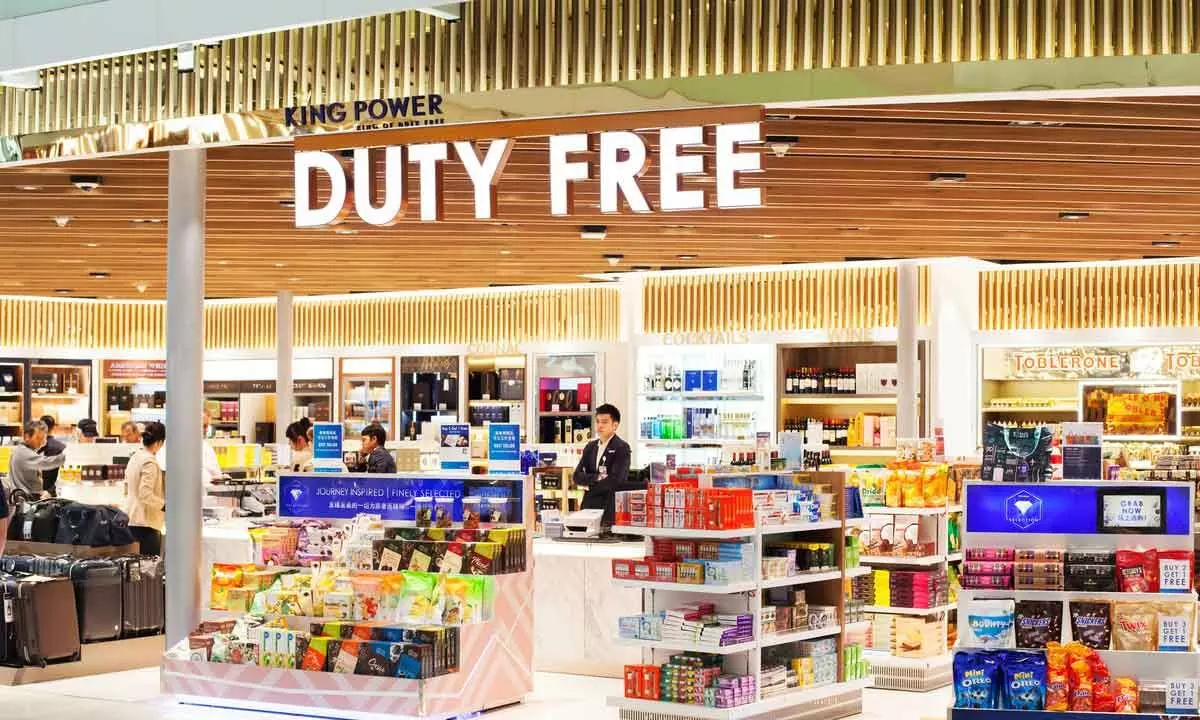Pent up demand in duty-free mkt puts pressure on airports
The duty-free retailing market is majorly driven by increasing growth of travel and tourism industry coupled with rising penetration of low cost airlines
image for illustrative purpose

As travel picks up, the prospects of duty free sale to rise more than projection is on the cards. The duty free industry is likely to raise the ante with more promotions, aggressive discounts and primarily to reduce the effect of Covid.
The global duty free retail market size was valued at $35.87 billion in 2021. The market is projected to grow to $72.23 billion by 2029, exhibiting a CAGR of 9.17 per cent during the forecast period. The global Covid-19 pandemic saw the duty free retail experiencing lower-than-anticipated demand across all regions compared to pre-pandemic market exhibited a decline of 42.38 per cent in 2020 as compared to 2019.
This market generates significant revenue for airports, airlines, tourism, and other travel-related industries worldwide. Duty free goods' sales typically happen within international zones, and these goods can also be sold on ships or onboard aircraft with shoppers/travellers in transit.
The duty free retailing market is majorly driven by increasing growth of travel and tourism industry coupled with rising penetration of low cost airlines. Increasing sales alcohol and confectionery is a major factor driving the growth of the global market.
Travel retail revenues make a functionally important influence to the overall financing of airports, the maritime companies as well as their infrastructure. All in all, these physiognomies of duty free retailing pose distinctive offerings for the travellers by meeting their needs, generating revenues and in turn supporting the maritime and aviation transport infrastructure and their services. Duty free retailing has emerged in parallel with the expansion of sea and air travel.
Although, the use of perfumes and cosmetics has a long history, increasing demand for premium fragrances and cosmetic products has raised the growth of the global duty free retailing industry. Rising investments by the governments of several economies to set up duty free retailing centres to cater to international tourists is another key factor driving the global market. Perfumes and cosmetics as well as tobacco goods are expected to register the fastest growth over the forecast period owing to increased demand for international tobacco and cosmetic products. Travellers prefer tasting tobacco and other products of different countries and prefer purchasing them from duty free retailing shops. This is expected to drive the overall market growth.
According to the research, in 2021-22 lower prices Vs the domestic market and value for money are consistently quoted across all segments, whether age groups, genders or travel purposes. Good value for money is a particularly significant purchase driver for seniors at 49 per cent and millennials, 34 per cent. Convenience is also an important purchase driver for both seniors, 36 per cent, Gen Z shoppers and leisure travellers (both at 23 per cent). Another common purchase driver in travel retail in 2021-22 is loyalty to the brand, especially for seniors (30 per cent) and females (26 per cent).
The research also analyses the importance of sales staff in influencing shopper behaviour. Sales associates have a significant impact on the decision to purchase and this varies quite considerably by customer segment as well as by region. The research reveals that the impact of the interaction has increased considerably in the wake of the pandemic as travellers set to the skies again.
Duty free markets are sensitive to exchange rates among countries. Although they operate in several countries with currencies including Euros, dollars, and pound, which have specific exchange rates, they are subject to global market changes exchange rate of a particular day. The currency exchange fluctuations in the global market may positively or negatively including retail chains that offer luxury goods, depending on the fluctuating exchange rate.
Recent years have witnessed considerable demand for duty free alcohol across countries, notably in Asia. The diversifying consumer buying habits, rapidly increasing international tourist arrivals, and rising spending among the rising demand for premium liquor is creating heightened consumer interest in duty free alcohol worldwide at a macro. The alcohol category has also witnessed significant developments, most notably product launches, in recent years. At a macro level, the growing demand for retail will boost duty free alcohol sales and other product types during the forecast period. Furthermore, the alcohol category is likely to encourage market key players to offer luxury and premium products.
As the duty free and travel retail industry had hoped, 2022 has so far brought real signs of hope that the recovery in international travel is under way. The pent-up demand for travel, so often alluded to during the darkest days of the pandemic, is evident in all markets. But that demand is putting severe pressure on airport and airline capacity. And the reopening of some countries, notably in Asia, is only taking place at a gradual, even glacial, pace.

